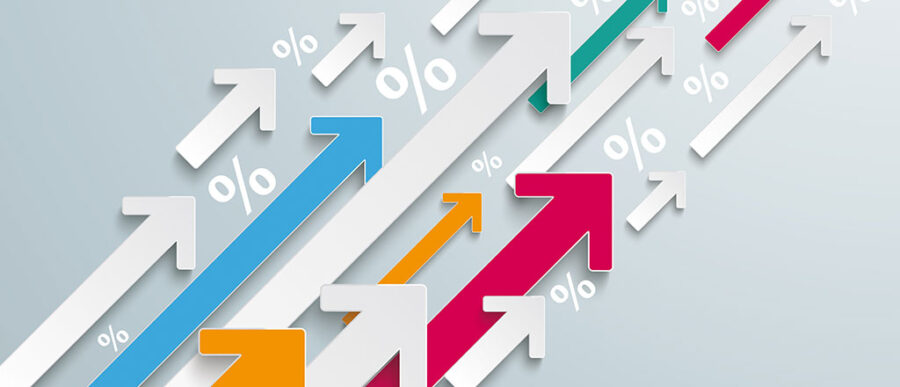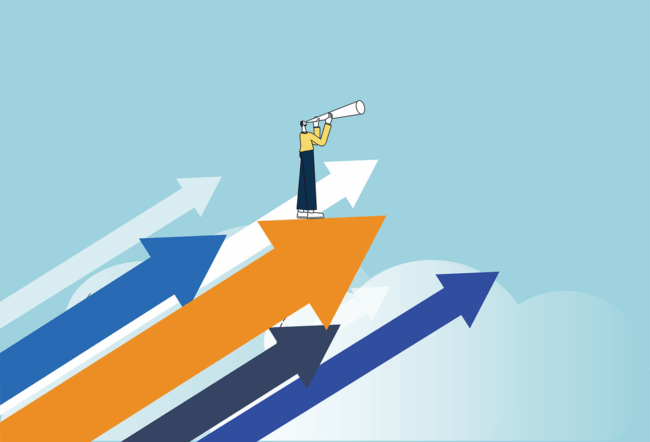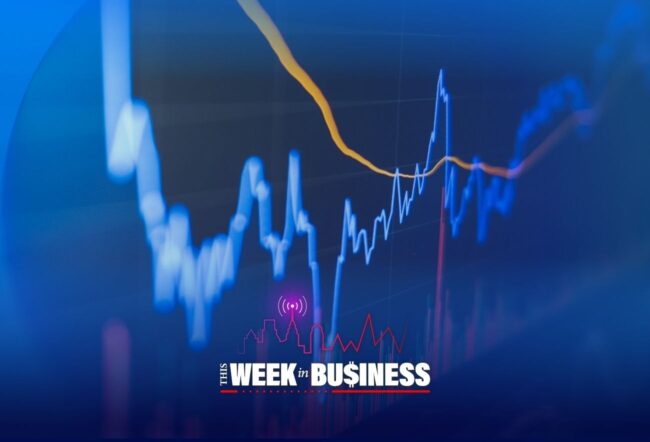The Federal Reserve’s plan to raise interest rates has had one of the longest drumrolls in history. At least, it seems that way. Speculation about when the hikes would begin, and how big they would be, has been going on for, well, years.
But this time, it seems, they really mean it. Comments made at the October meeting of the Federal Open Markets Committee all but guaranteed a 0.25% hike in its target for the fed funds rate at the mid-December meeting, raising it from near zero, where it’s been for seven years.
“I think global risks have receded,” says Wharton finance professor Jeremy Siegel, explaining why the Fed is likely to move now. Most importantly, he says, there is improvement in the U.S. job market. The Chinese markets and economy also appear to be stabilizing, he adds, reducing the danger of ripple effects from that big player. With the U.S. economy on more solid ground, the Fed can start a slow series of rate increases to head off any future inflation, Siegel says.
But he expects the pace to indeed be slow, with the Fed perhaps foregoing increases at some meetings as it watches the economy’s reaction to each move.
The fed funds rate, which banks charge each other for overnight loans, was over 5% in early 2007, but has been kept near zero since late 2008 to encourage borrowing to stimulate the economy. The Fed has less control over long-term rates that guide things like mortgage rates, but an increase in short-term rates can nudge long-term rates up, unless the marketplace thinks conditions will sour.
Fed Chair Janet Yellen told Congress on Dec. 3 that she saw no reason to delay plans to start a slow-paced series of rate increases in December. Delaying too long, she said, could force more abrupt hikes later, which could be disruptive. On Dec. 4, a strong government employment report further strengthened the odds of a December rate increase. U.S. stocks rose, suggesting that good economic news trumps concerns about the negative effects from higher rates, such as steeper borrowing costs.
A Turning Point
A quarter-point rate increase is normally not such a big deal. But this one has an outsize importance because it will be the first increase in so long. It marks a turning point, with the Fed finally believing the U.S. economy is gathering steam.
“My feeling is [a rate hike] will clear the air and we could see a good [stock] market rally after the announcement.” –Jeremy Siegel
But what does it mean, really?
“A 25 basis-point [hike] in itself … I don’t think people view that as, per se, something that should affect things that dramatically,” says Wharton finance professor Amir Yaron. “It’s more about what will happen going forward, and at what speed.”
Generally, the U.S. economic indicators for growth, employment and inflation are good, and Siegel says he expects meaningful improvements in worker productivity as well.
But there are a few clouds on the horizon. A late-November story in The New York Times, for instance, noted falling investor demand for various securities based on the risky types of debt, even though those securities offer higher yield than safer alternatives. About the same time, a Deutsche Bank Credit analyst noted ominously that poor performance in junk bonds compared to investment-grade bonds and stocks mimics a pattern seen in early 2000 and late 2007 — a pattern followed by market blow-ups. Performance of junk — or high-yield bonds — reflects views on companies deemed most at risk of running into trouble, offering an early warning of worsening conditions.
But these speculative markets tend to be jittery, as players often make short-term bets on modest changes in conditions. Over the longer term — a year or two or more — Wharton experts just don’t see major problems looming.
Ending Uncertainty
“The [FOMC] policy uncertainty is worse than the [likely effect of a] raise at this point,” Siegel said in late November, describing market jitters about change. “You have to see that the world will be left standing after the first raise…. We have to get the first raise out of the way.”
One of the Fed’s key priorities is to rein in inflation, and Yellen has said she expects inflation to rise over the next couple of years to the Fed’s target level of about 2%. The Consumer Price Index rose a mere 0.2% in the 12 months ended in October, but the core inflation rate, which excludes food and energy, was up 1.9%. By raising rates and making it more expensive to borrow, the Fed hopes to dampen spending a tad, making it harder for inflation to get a foothold.
But although the Fed is focusing on inflation, Siegel says there’s “no danger” that damaging levels of inflation will be here soon. Over the long term, inflation averages around 3% a year. However, he says, the unemployment rate continues to go down so the Fed “must act preemptively,” which is why a small rate hike makes sense now.
Falling unemployment can force employers to raise wages to attract workers, sparking inflation. But Wharton finance professor Bulent Gultekin argues that cycles of wage-driven inflation are likely to be more modest in the future because of globalization. If wages in one country rise too fast, employers can move production to another.
“There is a lid on wage inflation in the United States and elsewhere, so I don’t anticipate that inflation will jump all of a sudden.” –Bulent Gultekin
“The world economy is more interconnected,” Gultekin explains, adding that “as a result there is a lid on wage inflation in the United States and elsewhere, so I don’t anticipate that inflation will jump all of a sudden.”
Nor is there much chance inflation will be stoked overseas, he continues. “I think the world economy is moving into a slow-growth stage,” he says, citing China and Europe. “The U.S. is the only economy that seems to be moving forward … and it’s not sufficient to be the engine of growth for the rest of the world at this point.”
“There is probably a new normal which will keep interest rates below long-term averages for quite some time now,” adds Wharton finance professor Itay Goldstein. “There are several contributing factors to it including lower rates worldwide and lower growth due to changes in the labor market and due to changes in productivity.”
How will a measured pace of rate hikes affect stocks and bonds?
Some have worried that low rates on bonds have driven money to the stock market, pushing prices higher than they should be as investors chased higher returns. A Fed rate hike would boost the allure of new bonds but also make borrowing more expensive for companies and consumers — slowing down growth and reining in stock prices.
“An increase in rates will put a downward pressure on bond prices and stock prices and, if not handled correctly, could lead to a rush of investors out of funds and markets, which could aggravate the effect on prices,” Goldstein says. But, he adds: “This concern will further contribute to the tendency to increase rates much more slowly and to a lower level than in the past.”
But then again, this hike might not hamper stocks.
“To me it’s still about, do we find healthy growth and with it employment [growth]? Those will be the signs that we are back on the trajectory the economy needs to be on. I don’t think we are there yet.” –Amir Yaron
There have been only four series of rate hikes over the past 30 years, and effects were mixed. “Conventional theory of rising rates suggests that stock markets dip as the cost of capital increases for firms,” says former Federal Reserve analyst Jonathan Hill, director of investments for Gibraltar Private Bank & Trust. “I would suggest this is a negligible problem this time around with rates at all-time historic lows.”
Boon for Stocks?
Siegel says, market rally after the announcement.” He said he would not be surprised to see U.S. stocks gain 10% to 12% over the next year.
Though higher rates on new bonds can make older, stingier bonds less attractive, driving their prices down, Siegel does not think a small rate hike will affect existing bonds that much because an increase has been expected for so long that its effects are already reflected in bond prices. Nor does he expect much impact on the dollar.
That means a small Fed move is also unlikely to cause a spike in mortgage rates or other consumer loan rates, he adds.
Liz Ann Sonders, chief investment strategist at Charles Schwab, says yields on two-year Treasury notes are the highest in five years at over 0.9%, reflecting the market’s expectation of a Fed hike. But yields on 10-year Treasuries have not gone up as fast, sitting at about 2.2%. “This suggests the Treasury market is still in the early stages of responding to an initial rate hike,” she says. “The market is likely expressing skepticism about the economy’s growth trajectory and/or the likelihood of inflation accelerating much from current levels.”
Going forward, Yaron thinks bond yields and lending rates will remain low by historical standards, and he does not expect the Fed to resort to more dramatic moves anytime soon.
“To me it’s still about, do we find healthy growth and with it employment [growth]?” he says. “Those will be the signs that we are back on the trajectory the economy needs to be on. I don’t think we are there yet.”



